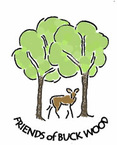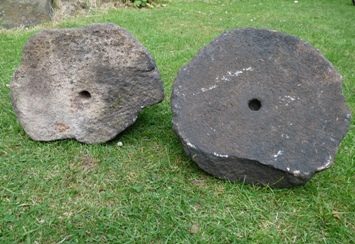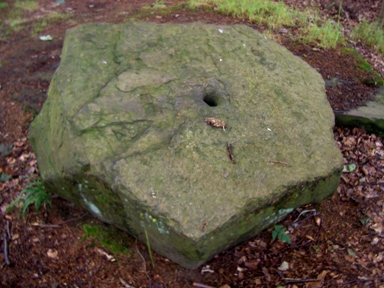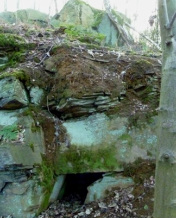
Buck Wood: A brief history
We now think of Buck Wood in terms of its value as a ‘green’ area of relatively quiet undisturbed woodland, a place for walking and other leisure activities, distant but not too remote from the city of Bradford’s urban environment.
However, in earlier times Buck Wood was a centre of more activity and industry than might be imagined nowadays. ‘A Breath of Fresh Aire’, an archaeological survey of the woodland undertaken in 2005 found evidence of occupation from prehistoric times, and a later dig and exploration, ‘A Breath of Ancient Aire,’ in 2009 confirmed these findings, as has other occasional evidence found around Thackley. Please click on the two links above to look at the full reports.
In 2016 the ‘Breath of Ancient Aire’ prehistoric site was awarded the status of Scheduled Ancient Monument by Historic England – recognition of the site’s importance nationally. The whole of the excavated site is included in the scheduled area, as is a larger section of the wood adjacent to the site, where there is a strong possibility of more prehistoric remains. Full details and maps can be found by following this link: historic_england_summary_of ancient_monument.pdf
But we know little of these times and events. Although the archaeological investigations indicate that there were people living in the area until the Romano-British period, and that they probably farmed the land and used most of the woodland trees for building huts and palisades, and for lighting fires for domestic use, there are no records until the 16th century of what was happening around Thackley and its woodlands.
And what use was made of Buck Wood in later years, when the trees had regrown and transformed it into woodland again? In 1750 a valuation was made of the trees on land belonging to Sir Walter Blackett, which included Buck Wood. The survey shows that the wide variety of trees was similar to nowadays, and that they were being managed as timber for diverse uses. They were cut down or regularly coppiced for regeneration. The woodland had to make a profit for the owners, and would not have been a haven of peace, but would have been an active and perhaps noisy working environment.
We also know that quarrying has taken place throughout Buck Wood for a long time. Mostly this was small scale, utilizing the large individual blocks of Millstone Grit rock that are still scattered throughout the wood, often to make millstones. Records show that millstone production was taking place in Bradford by 1342, and that it has been common in several areas around Thackley. Some unfinished examples of millstones can still be seen in Buck Wood, lying where they cracked and broke before they were completed. Larger scale quarrying took place on the hill side where Buck Wood merges into Field Wood, just as it did across Ainsbury Avenue in Poggy Wood, and on Birk Hill nearer to Thackley village.



